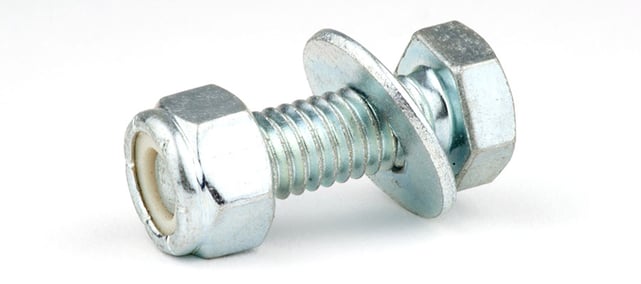
What is Galling?
Galling is a common problem with threaded fasteners, including locknuts. This type of problem is also called cold-welding and occurs while the fastener is being tightened. The pressure between the female and male threads breaks down the coating which increases friction. This can create a situation where the nut and bolt are warm enough to begin to fuse together.
If this happens and is noticed right away, the installer may still be able to separate the pieces. However, with assemblies that have continued to be tightened, the pieces may not come apart without totally stripping the threads from the fastener, cutting the bolt, or splitting the nut.
Why Does Galling Occur?
Unfortunately, galling is somewhat of a mystery. Often fasteners may gall that have passed all of their required inspections.
So, while it is confusing as to why galling may occur on a certain piece, there are some common features between galled assemblies. Most of the time galling happens in stainless steel locknuts, but may also occur in aluminum or titanium assemblies. Additionally, damaged or fine threads may cause the nut to seize faster.
What Steps Can I Take to Reduce Galling?
• Slow down: One of the biggest mistakes that can lead to galling is installing a fastener too quickly. Greater speeds tend to produce more friction and heat which may make the nut and bolt seize. Simply slowing down wrench installation, can solve the problem. For this reason, it is recommended that you not use power tools.
• Lubricate your threads: One simple way to reduce your assembly’s chance of galling is to lubricate the threads well. Many lubricants are available; however, the end use of your assembly must be in mind when one is chosen. Some lubricants may not be suitable for your business. For example, assemblies used in the food industry would preclude the use of certain lubricants for safety reasons. Lubricants also might not allow the nut to tighten as it should. Check with a locknut representative to see if a lubricant is recommended for your use.
• Avoid Threads with a Different Alloy If Possible: Consult with a representative to find metals that will work well together, retain important properties, yet provide less chance of galling.
• If the Assembly Begins to Seize, Stop: Leave assemblies that have begun to seize for a few minutes so they can cool down. Once you can safely remove the nut, check the pieces for damage.
Creating a Solid Assembly
Galling is a common problem, but with a few extra precautions you can greatly reduce the chance of it happening in your assemblies. To learn more about ensuring your assembly performs as it should, check out our buying guide on locknut coatings, “Corrosion Resistance for Locknuts.”
Resources:
Fastenal. “Galling.” Galling_Feb-26-09.doc. Web. 15 December 2016. <https://www.fastenal.com/content/feds/pdf/Article%20-%20Galling.pdf>.
Greenslade, Joe. "How To Stop Thread Galling On Stainless Fasteners." Stainless Steel Galling / Locking Up / Freezing Up. N.p., n.d. Web. 15 Dec. 2016. <http://www.estainlesssteel.com/gallingofstainless.html>.
"Thread Galling." Bolt Depot - About Thread Galling. N.p., n.d. Web. 15 Dec. 2016. <https://www.boltdepot.com/fastener-information/materials-and-grades/Thread-galling.aspx>.




